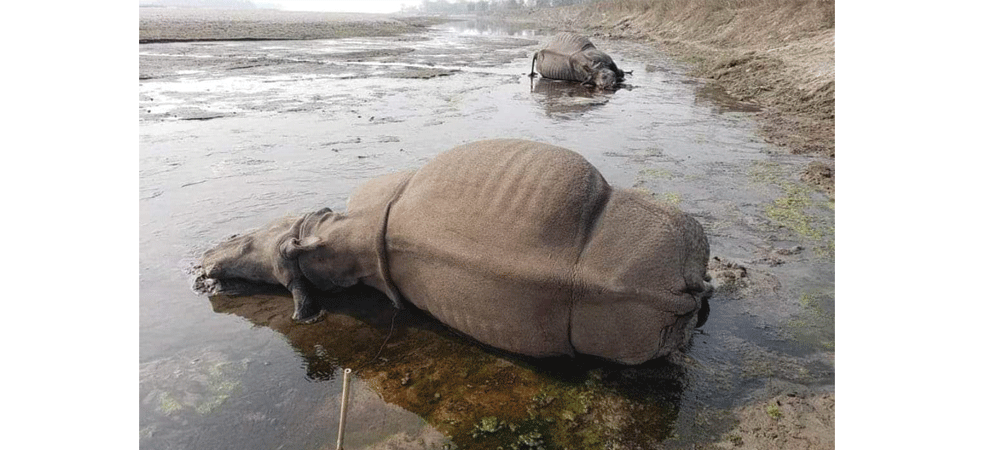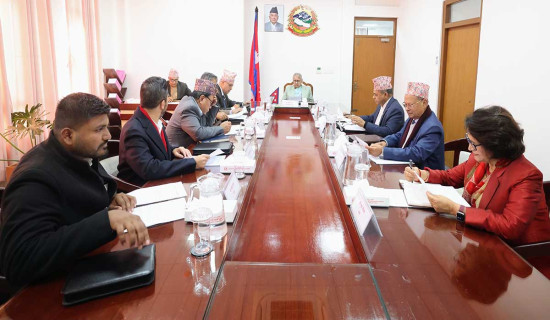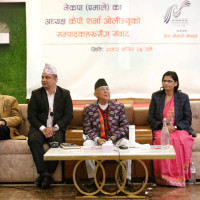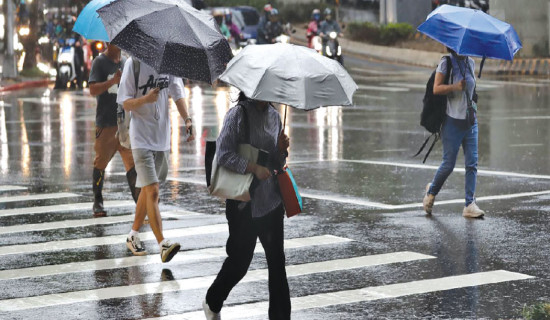- Thursday, 11 December 2025
Surge in rhino killing warrants new methods to offset trend
Kathmandu, Feb. 12: The number of endangered one-horned rhinoceros deaths (both natural and poaching) has increased in the Chitwan National Park (CNP) recently.
Some two weeks ago, a 14-year-old mother and a four-year-old calf were found dead in East Nawalparasi, in Madhyabindu Municipality-2, under CNP territory. The mother was found without a horn. A post-partum report showed that both the mother and calf rhinos were killed by electrocution.
Officials said both were killed by smugglers. After seeing the dead rhinoceros, the locals informed the park officials and the Nepal Army.
Earlier on December 14, 2022, a 15-year-old female rhino was found dead in Gundrahi Dhakaha Madhyawarti Community Forest in the western sector of the Lamichaur post of the CNP.
Similarly, a dead rhino without horns was found in Kalika municipality-1 of Chitwan on December 3, 2022. Suspected of being killed by poachers six months ago, the rhino was found decomposing.
According to Ajay Karki, Deputy Director General and Spokesperson for the Department of National Parks and Wildlife Conservation (DNPWC), the increasing number of rhino deaths raised concern for all stakeholders. “We have found that poachers are changing the nature of crime,” he said. The crime of killing endangered species decreased in the last few years but the trend has increased again, he added. “Seeing the recent trend it is abundantly clear that the tendency of crime has shifted from tradition to modern,” Karki said.
“Earlier the trend was to trap a rhino by digging pits and using spears and muskets to kill it. Now the poachers have shifted their modus operandi to electrocution,” Karki said.
A probe team led by himself was also formed to investigate the deaths of rhinos. In the recent mother and calf death, they found that the poachers possibly connected live wires from a temple about 200 metres from the incident site to electrocute the rhinos.
According to Ana Nath Baral, former chief conservation officer of the CNP, the trend is horrible. Earlier, they marked 2011 as the first zero-poaching year. The country also marked zero poaching years in 2014, 2015, 2016, 2018, 2019 and 2020.
However, a total of 37 rhino deaths in the CNP and its buffer zone in the last fiscal year 2021/22 showed the weakness of the CNP, Baral said.
The incident happened due to a lack of preparedness of CNP officials and other concerned bodies, he said.
Karki added, “Now we have challenges on how to develop a technology that catches poachers and exposes their crime. There are more than 6000 youths, 542 units under the Community-Based Anti-Poaching Unit (CBAPU), but we currently do not have any programme to involve them actively. We are working to reform the units and engage them actively.”
Another part is, there used to be a programme for the people living in the buffer zone and for their mobilisation for anti-poaching activities. But now, there are no such progammes after the COVID-19 pandemic. Fifty per cent of the tax received from the national park used to be mobilised to the community of people and their programme, so the anti-poaching programme used to be effective, but the pandemic upended that.
That has affected community mobilisation, capacity building and interaction programme, which has created a gap between the community and the park, he added. “We have also challenges to rehabilitate freed poachers as there are over 60 freed (who completed their jail term) poachers in the CNP alone. Some 23 poachers are still in jail. “We are not able to make programme centered on resettling them in society and making them involved in anti-poaching activists,” he said.
Worried about the recent criminal trend, a rhino probe team was formed to investigate the overall crime in the national park and to find out the role of stakeholders, including security forces, national park officials, community, conservation partners, CBAPU, Province government and local government for anti-poaching activities. The team will present the report within a month.
From 2000 to 2023, altogether 526 rhinos died in the CNP, of which 136 were killed by poachers. In 2022/2023 alone, 10 rhinoceros died in the CNP, of which three were killed by smugglers.
According to the 2021 rhino census, Nepal is home to 752 rhinos. Of these, 694 are in the CNP.
















